Pacific Planning Advice
There are few oceans as beautiful as the Pacific and few cruising routes as wonderful as those across the South Pacific. This article provides useful and informative planning advice and links for anyone undertaking a Pacific crossing.
Published 1 year ago, updated 3 weeks ago
Planning Advice for Crossing the Pacific
Having passed through that symbolic gateway – the Panama Canal – the whole Pacific Ocean is suddenly beckoning, a vast area that covers one-third of the globe. In spite of the long distances that lie ahead, with careful planning this could be the most pleasant part of a long voyage. Below is an outline of the most important criteria that anyone planning such a voyage should bear in mind.
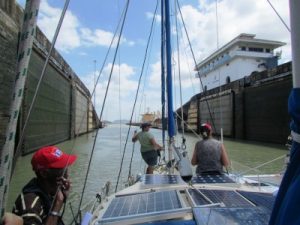

Possible Schedules for a Pacific Crossing:
As the safe sailing season in the South Pacific is well defined and the weather is usually fairly benign in the eastern part of this vast ocean, the most critical decision concerns the time of arrival in the first tropical island group. Most boats transit the Panama Canal before the onset of the hurricane season in the Caribbean (June to November), with the busiest time for Canal transits in February and March.
Those who plan to sail all the way across to Australia in one season need to reach the Marquesas (French Polynesia) not later than May, although an April arrival is better as it allows more time to sail the remaining distance. In French Polynesia, the cyclone season lasts, at least on paper, from late November until the end of March, but as the Marquesas are very rarely affected by tropical storms one can take a calculated risk and arrive there early in the season. This normally means transiting the Panama Canal early in the year (February) so as to have enough time for a stop in the Galapagos. From there, the 3,000-mile passage to the Marquesas can start early in March so that the Marquesas are reached in late March or early April.
- See this useful report for info on passage planning from Panama to the Galapagos.
- See this useful report for info on passage planning from the Galapagos to the Marquesas.
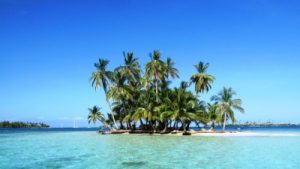

Crossing to French Polynesia
One serious drawback of the above schedule is the need to leave the Caribbean at what is the best time there, so an alternative is to stay in the Caribbean until the end of the safe season (June), then cruise leisurely through those places that are not affected by hurricanes (Venezuela, ABC Islands, Panama’s San Blas Islands). Having transited the Panama Canal one can sail to mainland Ecuador where Puerto Amistad and Puerto Lucia provide a safe and convenient place to leave the boat while visiting the interior of South America or to just wait until the time comes to sail to the Marquesas.
This timing also allows the option of not sailing the traditional route to the Marquesas, but make a detour to Easter Island and Pitcairn so as to arrive in French Polynesia via the Gambier Islands. As in the case of the Marquesas, those islands should not be reached before the end of March and the start of the safe sailing season in the South Pacific.
From French Polynesia to Fiji
The onward passage to Fiji can be sailed any time during the safe season. Its timing will depend on your onward plans once you leave there. There are many interesting island groups to explore en-route: to the north the northern Cooks, then either Tonga or the Samoas; to the south the southern Cooks, Niue and Tonga.
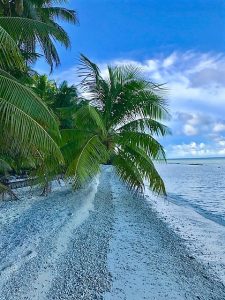

As most yachts sail to the Cook Islands from the east, a good time to plan one’s passage is after the 14 July celebrations in Tahiti are over, as the first week of August is the time when the Cooks put on their own festivities around Constitution Day. Most of the action is in Rarotonga, but the other islands can be visited afterwards.
From Fiji to New Zealand or Australia
Once you reach Fiji it’s decision time: to head to New Zealand or Australia for cyclone season; or continue to Vanuatu, the Torres Strait and beyond to the Indian Ocean. If circumnavigating and taking the Cape of Good Hope route, it’s important to pass through the Torres Strait by early September, giving sufficient time to reach South Africa by early November (before the start of the cyclone season in the Indian Ocean).
If however, your desired route is to the northern Indian Ocean and SE Asia, then passage through the Torres Strait can be delayed until October.


Weather for a Pacific Crossing:
Most boats follow the traditional route across the South Pacific that sweeps in an arc from Panama to the Torres Strait. Favourable south-east trade winds are a usual feature of this route during the winter months. However, normal weather conditions can be affected by various factors, such as the El Niño or La Niña phenomena (warming and cooling of the ocean surface across the eastern and central equatorial Pacific).
El Niño and La Niña typically develop in the northern hemisphere’s spring-summer and peak in winter. The oscillation between ENSO warm phase (El Niño) to neutral or cold (La Niña) conditions occurs on average every three to five years, while also ranging from two to seven years. El Niño can last up to 18 months and La Niña up to three years. The last multi-year La Niña event, began in September 2020 and prolonged into early 2023 – first “triple dip” La Niña of the 21st century.
Latest forecasts from WMO Global Producing Centres of Long-Range Forecasts indicate a 55% likelihood of a transition from the current neutral conditions (neither El Niño nor La Niña) to La Nina conditions during December 2024 to February 2025.
The return of the ENSO-neutral conditions is then favored during February-April 2025, with about 55% chance.
Read more about El Niño and La Niña at the World Meteorological Organization website.
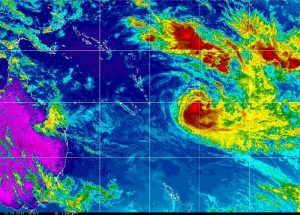

Even at the height of the winter season, consistent winds are only encountered at the two extremes of this route, between the Galapagos and Marquesas, in the east, and in the Coral Sea, in the west. Between these two extremes, sailing conditions are often a matter of luck, with long spells of steady trade winds in some years, or an alternation of short periods of two or three days of steady winds followed by a spell of unsettled weather with squalls, thunderstorms and variable winds.
A constant feature that affects weather conditions throughout the tropical South Pacific is the South Pacific Converge Zone. The SPCZ stretches in an ESE direction from about 5°S, 155°E to 20°S, 150°W, and can influence weather conditions all the way from the Solomons to Tahiti, although its effects are particularly felt in the area between French Polynesia and Tonga. The location and movement of the S.P.C.Z. are monitored by the Fiji meteorological office.
- IMO/WMO Worldwide Met-Ocean Information and Warning Service
- Noonsite Pacific Crossing Routing Articles and Resources
- Free Forecast Services
- Hurricanes & Tropical Cyclones Articles and Resources
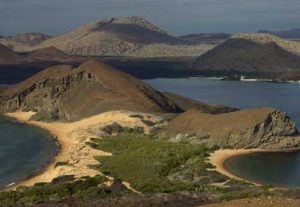

Galapagos Interlude:
The Ecuadorean authorities demand tight conditions for stopping in this archipelago with your own yacht. For some, the obstacles are too great to overcome. However, most who visit would agree that it’s worth the cost and the paperwork/organisation in advance. All visitors arriving on their own yacht must have a pre-arranged permit (Autografo), which must be organized at least 60 days in advance of your visit by an agent. The Autografo permits a stay of up to 30 days with a possible extension of an additional 30 days. Yachts wanting to explore outside the major ports will need to have a licensed guide on board at an additional cost. Short stops for fuel and water, or in the case of an emergency, are permitted at the discretion of the Port Captain. An extended stay here means you will definitely leave with incredible memories.
See these reports from cruisers who detail their experiences entering and visiting the Galapagos:
- Galapagos: A Paradise Worth the Paperwork (Cruising World August 2024)
- Enchanting Islands and Intriguing Sea Lions (Noonsite January 2024)
- An Unforgettable visit to a Unique Group of Islands (Noonsite January 2022)
Cruisers must be careful to follow the rules, outlined on the Galapagos Formalities page. Every year yacht agents report, concerned that some cruisers arrive in Galapagos without a permit (Autografo) and then wander ashore in the National Park without permission. There are very strict rules for all tourists coming to Galapagos, in particular yachts, and these must be adhered to or you risk arrest – plus cause problems for those following in your wake, as stricter controls will be brought into play. In 2023, one cruising yacht did not follow the rules to confine their pet on board during their stay and instead chose to take the dog for a paddle board along the shore. Consequently, yachts with pets on board are now banned from coming to Galapagos.
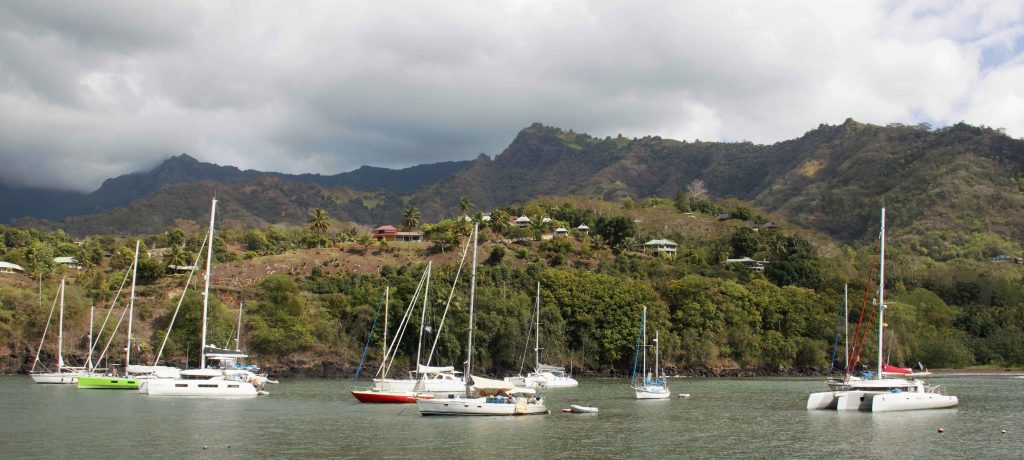

Staying in French Polynesia (FP):
To really see these South Pacific islands properly, many cruisers choose to spend two winters here. Some leave the tropics for the cyclone season, sailing south to NZ or Australia or north to Papua New Guinea and Micronesia. Others remain in the tropics for the summer finding shelter in one of the safe harbors or all-weather marinas (see cyclone shelter notes below).
Cruisers who want to stay in French Polynesia (FP) longer than 90 days are required to obtain a Long Stay (LS) Visa/carte de sejour (CDS), which must be applied for outside of French Polynesia at a French consulate or embassy. EU citizens are exempt from this requirement (but not Swiss, Icelandic, Norwegian or Liechenstein citizens).
Non-EU citizens must apply for the long stay visa if they wish to stay for more than the given three months. If applying at a French consulate from most other countries (such as the USA, Canada, Panama, New Zealand etc) you cannot apply before 90 days of the date of your arrival date in French Polynesia (the Start date).
Until recently cruisers would be issued with a 90 day visa that required you to arrive in FP within those 90 days and then after your arrival in FP, you could apply for the Carte de Sejour (visa extension). This required essentially applying and submitting almost identical paperwork (except now it needed translation).
The 90 day application window is still in effect, but instead of a 90 day window to arrive you are now issued a one-year visa. This greatly relieves the time crunch of when to depart and arrive, because now cruisers can arrive anytime within that one year window
Foreign boats can only stay 24 months now in French Polynesia before having to pay 7% import tax. Find out more at French Polynesia Formalities. Useful information is also available on the following news items, cruiser reports and Cruiser Blogs:
- Experiencing the Long Stay Visa Application Process (February 2025)
- Update on Changes to Long Stay Visa Requirements (January 2025)
- Applying for a FP LS visa (SV Jacaranda – continually updated)
- How to Apply for a FP LS visa from Mexico (SV Migration)
Rules and Restrictions in French Polynesia
During the Pandemic, a great many boats were stuck in French Polynesia with no where else to go. The islands’ well known welcoming reputation became tarnished with reports of abuse against cruising boats. Many new rules have since been introduced restricting anchoring options and the Society Islands in particular are suffering with over-crowding and limited yachting facilities for the current demand. As Papeete (Tahiti, Society Islands) is the central base for repairs, provisioning and travel connections, an understanding of the current situation is important if planning on visiting FP. Read these reports for more details:
- Booking System for Recreational Vessels to be Introduced in 2025 (September 2024)
- Six Months Cruising the Tuamotus (October 2023)
- New No-Anchoring Zones for Raiatea and Tahaa Islands (July 2023)
- French Polynesia: Making Sense of Anchoring Restrictions (May 2023)
- French Polynesia Update (October 2022)
- French Polynesia: Paradise No More? (December 2021)
- Significant Changes to Anchoring Restrictions for Cruising Yachts (February 2020)
The only other centre with extensive repair facilities is on Raiatea, where two charter companies have their base. Facilities are on a par with Tahiti, or even better, and have the great convenience of being grouped together.
Keep abreast of the latest French Polynesia Reports and News.
A Lesser-Travelled South Pacific
Just as it is beautiful, the Pacific Ocean is vast. While many cruisers will take the popular, well-established routes westwards, there are other corners and routes that offer perhaps even greater rewards to those who want to avoid the crowds and take on different challenges.
Francis Hawkings, author of theThe Pacific Crossing Guide 4th Edition has some options for those who want to take a route less-travelled.
Cyclone Shelters in the South Pacific:
For those prepared to stay in the tropics during the critical cyclone period (mid-November to May), there are a number of hurricane holes conveniently spread out across the South Pacific. Only some of them are fully fledged hurricane shelters and because of the large distances that separate the various island groups, running for shelter if a cyclone is predicted may not only be a hazardous affair, but one may also find that there is no space left when one gets there. The best tactic is either to stay close to a chosen shelter, or cruise on the edges of the cyclone belt, so as to be able to possibly sail out of danger, for example by sailing north from the Marquesas towards the equator.
Looking at those shelters from east to west, the Galapagos and Easter Island can be dismissed at they are not affected by cyclones. On rare occasions, a cyclone has reached as far east as Pitcairn or north-east to the Marquesas, although the latter are very rarely hit by a full cyclone. The outer island groups of French Polynesia (the Gambier and Austral Islands) can be affected but the risks are lower than in the Tuamotus, which are not only more exposed but their unprotected lagoons provide no shelter in a cyclone.
The Society Islands attract fewer cyclones than the island groups further west, but should perhaps be avoided during the critical period. The few marinas are full with local or charter boats, so the only possible shelters in Tahiti are the landlocked lagoon at Port Phaeton on the south-west coast, which has a small marina and good anchorage, or the anchorage behind the reef at the Tahiti Yacht Club in Arue, east of the capital Papeete. On the island of Raiatea, boats can be left on the hard at one of the two boatyards, but during a cyclone, several boats have been blown over and suffered extensive damage.
The Cook Islands are best avoided during cyclone season.
Neiafu Harbour in Tonga’s Vava’u group is very well protected and experiences fewer cyclones than Fiji and there are several operators who rent cyclone moorings for that season which conform to insurance standards. Some will also provide an excellent, reliable caretaker service.
Vava’u escaped relatively unscathed from the January 2022 Tonga earthquake and tsunami. The ash clouds didn’t quite reach the island which only got a light sprinkling of ash fall. The Tsunami also had no effect on Vava’u’s sheltered water ways. Two earthquakes in August 2024 also caused no serious damage on land but did damage the undersea communications cable. The Boatyard Vava’u provides dry dock storage over cyclone season.
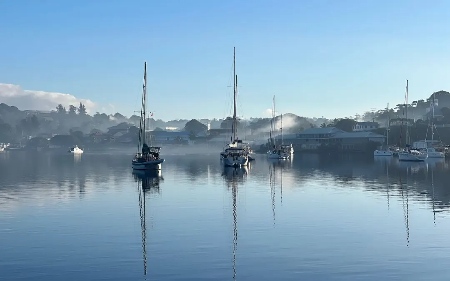

In the Samoas, traditionally the best cyclone shelter is at Pago Pago in American Samoa.
More secure places are to be found in neighbouring Fiji, where several cyclone-proof marinas have been built, although these do fill up quickly with local boats so early bookings are advised. As a result of this many sailors have been persuaded to spend the summers in Fiji.
On the island of Vanua Levu, Waitui and Copra Shed marinas at Savusavu have laid down a number of strong moorings, all of which have performed very well when cyclones have passed through. The newest marina at Nawi Island has berths that have been designed and built up to a category 5 cyclone resistance rating.
On the west coast of Viti Levu the marina at Lautoka, Vuda Point, offers good protection in a circular basin that can be entirely closed off by an anti-surge barrier. For added protection, boats left on the hard at this marina have their keels dropped into a trench. Port Denarau Marina has a natural cyclone protection area in the mangroves adjacent the marina. A cyclone shelter has also been created in a land-locked basin at Musket Cove on the island of Malololailai.
Even further west, the land-locked natural harbor of Port Vila in Vanuatu offers adequate protection in a cyclone as does Port Moselle Marina at Noumea in New Caledonia. In the Solomons, the best shelter is reported at Tulagi opposite the capital Honiara.
The above list is by no means exhaustive and there are small sheltered spots in most island groups that may be known to locals.
Health Issues in the South Pacific
Keep an eye on the World Health Organisation website to check for any health alerts in the countries you are planning to visit so you can prepare you and your crew accordingly. It may be that certain vaccinations are required and certificates carried, or that restrictions are in place at ports of entry if coming from a country with an epidemic and further health paperwork needs to be carried by all crew.
Measles: A number of Pacific Islands suffered a measles epidemic in 2019 and increased measures were put in place preventing anyone from entering if they had not had the MMR vaccination. See news item for details.
Dengue Fever: There are on-going Dengue Fever outbreaks in the Cook Islands, Guam, Kosrae and Yap States in FSM, French Polynesia, Palau, RMI and Wallis & Futuna.
See the Health sections on all country/Formalities pages for further details.
Health Documents
To be on the safe side, the following health-related documents should be kept on board should they be needed:
- Past itinerary and previous ports of call (up to 14 days prior).
- Recent crew member and passenger travel history.
- Health clearance from the last port.
- Crew medical records.
- Crew immunization cards.
- Crew vaccination certificates.
Useful Reports include:
Security
See the South Pacific security page for security advice.
Trading Goods in the South Pacific
Trading is a great way to engage with the local people living on many of the islands in the South Pacific. In the more remote islands trading with yachts has become a way for islanders to source supplies they need but can’t access. It is also a way for yachts to source fresh fruit and vegetables. These reports from cruisers offer some valuable guidelines for what to trade and how to manage the process.
- Trading in French Polynesia – Sailing Totem
- Trading Goods in the South Pacific – SY Adina
- Insights: Be Kind to the Local People
A Guide to Pacific Marinas, Harbors and Boatyards:
French Polynesia
- Papeete City Marina: full-service marina in the middle of the city
- Papeete Harbour (Quai des Yachts): basic services on busy town centre quay
- Marina Taina : full-service marina 5NM from Papeete, booking essential
- Yacht Club de Tahiti : full-service marina 5NM from Papeete, limited visitor space
- Marina Vaiare, Moorea: small local marina with good protection, limited visitor space
- Tahiti Nautic Centre, Taravao: small marina with boatyard (20 ton hydraulic propped trailer (max. draft 2m))
- Techni Marine, Motu Uta: full-service boatyard with 300 and 75 metric tonne travel lifts close to the city
- Marina Apooiti: popular charter base and full-service marina, limited space for visitors
- Marina d’Uturoa: Dream Yacht Charters base, possibly moorings available
- Chantier Naval Des Iles Sous le Vent (CNI), Uturoa: full-service boatyard with 20-ton hydraulic trailer
- Raiatea Carenage Services, Uturoa: full-service boatyard with 25-ton travel lift
- Mai Kai Marina & Yacht Club and Bora Bora Yacht Club: Offer moorings only and facilities ashore
- Maintenance Marquises Service (MMS): Basic facility boatyard with 25-ton PARKLEV trailer haulout, good protection
- Fakarava, Pakokota Yacht Services: Moorings and services ashore
- Apataki Carenage: DIY Yard. Mono and Multihulls up to 20 tons, 2.2m draft and up to 14m beam/
Niue
- Niue Yacht Club: safe moorings for visiting yachts & facilities ashore
Tonga
- The Boatyard Vava’u: full-service boatyard
- Neiafu Harbour: protected harbour with moorings
- Big Mama Yacht Club: shore services provided for yachts in anchorage at Pangaimotu island. Unfortunately, the Yacht Club and most everything on the island was destroyed by the tsunami and the subsequent ash cloud from the Hunga Tonga Hunga Ha-apai volcanic eruption on 15 January 2020.
- Nuku’alofa: the fate and/or condition of moorings in Faua Harbour is unknown following the Hunga Tonga Hunga Ha-apai volcanic eruption on 15 January 2020.
Fiji
- Musket Cove Marina: full-service marina and moorings
- Musket Cove Yacht Club: small number of visitor berths
- Copra Shed Marina: full-service marina
- Savusavu Marina and Curly’s Haulout: full-service marina with cyclone moorings and haulout facilities.
- Waitui Kelekele Marina: mooring buoys with services ashore
- Vuda Marina Fiji: full-service marina and boatyard
- Port Denarau Marina: full-service marina and boatyard
Suva:
- Royal Suva Yacht Club: full-service marina usually full of local boats, anchorage nearby
- Tradewinds Marina: small resort marina
New Caledonia
- Marina de Hienghene: small marina on the NE Coast – more suitable for shallow draft vessels with basis services.
- Marina de Pandop: small marina with basic services on the west coast. Entry requires permission – call ahead.
- Lifou Marina (Marina de We): small marina for vessels under 45 ft
- Port Moselle: full-service marina
- Port du Sud Marina: full-service marina
- Marina de Ouenghi: small marina 25nm from Noumea
New Zealand
- Bayswater Marina: full-service marina
- Gulf Harbour Marina: full-service marina and boatyard
- Half Moon Bay Marina: full-service marina and boatyard
- Orams Marine: full-service marina and boatyard
- Pier 21 Marine Centre: full-service marina and boatyard
- Pine Harbour Marina: full-service marina and boatyard in East Auckland
- Hobsonville Marina: full-service marina and boatyard
- Westhaven Marina: full-service marina in Downtown Auckland with moorings
- Eastland Port Marina: full-service marina with haul out facility
- Gulf Harbour Marina: full-service marina and boatyard
- Bay of Islands Marina and Boatyard: full-service marina and boatyard
- Kerikeri Cruising Club Marina: full-service club marina
- Tauranga Bridge Marina: full-service marina and boatyard
- Tauranga Marina: full-service marina and boatyard
- Chaffers Marina: full-service marina with travelift
- Evans Bay Marina: full-service marina with boatyard nearby
- Seaview Marina: full-service marina and boatyard with 50-ton lift
- Whangamata Marina: full-service marina and boatyard with 35-ton lift
- Marsden Cove Marina: full-service marina and boatyard
- Riverside Drive Marina: full-service marina and boatyard
- Tutukaka Marina: full-service marina
- Whangarei Marina (Town Basin Marina): full-service marina
- Whangaroa Marina: small marina with facilities
Agents
- French Polynesia – Tahiti Crew
- French Poynesia – Nuku Hiva Yacht Services
- Panama Canal agents
- Galapagos agents
Communications
- For the latest info on active radio nets for the Pacific see communications.
- World Sailing Cruising Routes Facebook Group
- Pacific Puddle Jump
- OCC Pacific Crossing
- South Pacific Islands Sailing and Cruising
- French Poly Cruisers Facebook Group
- Kids4Sail Facebook Group
- Cruisers Forum
- Optimizing Iridium GO use on Board
Weather Resources
General: For a comprehensive list of weather resources see weather.
Also, check out these useful reports about weather in the Pacific:
- South Pacific Weather Resources by Rory Garland from SY Streetcar.
- Sources of Weather information for the Pacific Ocean by Rob Murray from SV Sarana.
- NIWA Island Climate Update – A monthly summary of the climate in the tropical South Pacific islands, with an outlook for the coming months.
- Hurricane Holes for the Eastern Pacific – by the Panama Posse
Hawaii: WWVH in Hawaii gives storm warnings for the entire Pacific at 48 minutes past each hour on 5000, 10000 and 15000 kHz
French Polynesia: Weather forecasts in French are available from Meteo France, Tel:(689) 36 65 08, Fax:(689) 80 33 09, www.meteo.pf
Weather forecasts for the next 24 hours are broadcast every day on VHF channels 27 (Windward Islands) and 26 (Leeward Islands) at 1100, 1200, 2040,2100 local Tahiti time.
Mahina Radio forecasts for French Polynesia on 8803 kHz at 2100Z (also on VHF channels 26 and 27). Warnings at 0640Z and 1800Z.
Fiji: Suva Radio forecasts for tropical SW Pacific on 4372.9 and 6746.8 kHz at 0033, 0433, 0803, 1203, 2003Z
Fiji Meteorological Service http://www.met.gov.fj/
New Zealand: Russell Radio, located in the Bay of Islands, provides weather information for the Western Pacific and runs a maritime net on 13101 kHz (16:30 to 17:30), 6516 kHz (18:00 to 18:30), 4445 kHz (18:30 to 19:00) and 4417 kHz (19:00 to 19:30).
VHF Ch. 63 Marine weather broadcast at 08:00, 09:30, 13:30 and 17:50.
New Zealand and South Pacific weather: http://www.metvuw.com/
New Zealand Metservice: www.metservice.com
Taupo Maritime Radio (New Zealand) forecasts fort subtropical SW Pacific on 6224, 8297, 12356, 16531 kHz at 0903 and 2103Z
Other Resources
Navigating Pacific Atoll Passes
Cruising Reports
- Cook Islands
- Fiji
- French Polynesia
- Galapagos
- New Caledonia
- New Zealand
- Niue
- Samoa
- Tonga
- Tuvalu
- Vanuatu
Cruising Blogs from the Pacific
- Sailors for Sustainability
- SY Avenger – Panama/Galapagos/Marquesas
- SailSurfRoam – The Austral Islands
- Galapagos to French Polynesia May/June 2015
- Jacaranda Journey
- Mahina Expeditions
- Mexico To Marquesas 2018
Other Useful Resources
- Documents Required when Cruising Abroad
- Managing Essential Paperwork whilst Cruising
- Managing Money whilst cruising
- Everything you need to know about sailing rallies and cruising in company
- Checking the Checklist
- Grab Bag: What should you pack for a long voyage?
- Choosing Crew
- Ocean Crew Link
- Demystifying International Clearance for Cruisers
- Bugs: Nine Ways to Keep Bugs at Bay
Related to following destinations: Australia, Cook Islands, Easter Island, Ecuador, Fiji, French Polynesia, Galapagos, New Zealand, Niue, Panama, Pitcairn Island, Tonga
Related to the following Cruising Resources: Cruising Information, Pacific Crossing, Pacific Ocean East, Pacific Ocean South, Pacific Ocean West, Routing, World Regions Information




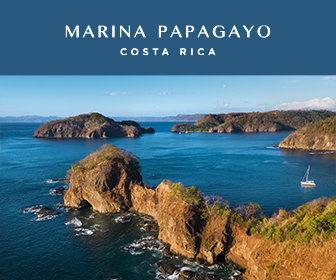
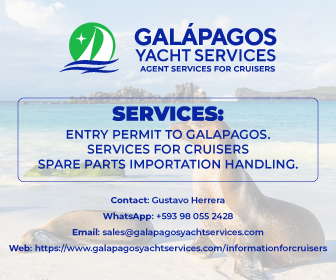



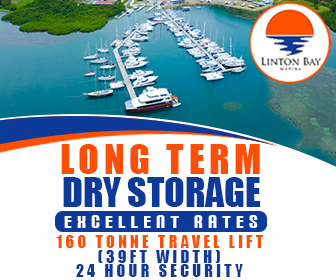
Another useful article by CW magazine:
Pilot Charts, GRIB Files and Wind Patterns: Understanding Weather Bulletins, Models and Forecasts Makes for Safer, Happier Cruising.
After eight seasons sailing the South Pacific, the crew of Sparkman & Stephens 41 Pitufa have learned to embrace their morning rituals of coffee, convergence zones, and surface analysis charts.
https://www.cruisingworld.com/how-to/pilot-charts-grib-files-wind-patterns/
Useful article by Cruising World Magazine – September 2018
Pacific Passage Planning: https://www.cruisingworld.com/pacific-passage-planning
Most boats make the decision to visit New Zealand leaving Tonga or Rarotonga to avoid the cyclone season arriving about Mid October. Spend the summer season either cruising NZ or haul out for maintenance and repairs.
They leave the beginning of the next cyclone free season for Fiji or New Caledonia or Vanuatu by various races departing from NZ at that particular time or cruise individually or join a rally to Australia Fiji New Caledonia and Vanuatu. Its double tracking going to Fiji, then to NZ then Fiji again New Caledonia or Australia or Vanuatu.